The New Normal: Predictable Unpredictability
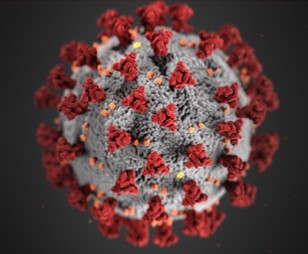
The 21st century is a time of accelerating change with profound implications for local communities. Consider the events of the last two years: the loss of lives and other impacts of a global pandemic; protests sparked by police killings of Black Americans; wildfires, heatwaves, floods, and other natural disasters; and more. These events occurred against the backdrop of longer-term trends such as changing demographics, technological disruption, and increasing inequality related to structural disparities in society and the economy. As communities look towards 2022 amidst the uncertainty of a recovery complicated by new variants of COVID-19, now is the time to consider how to prepare for the shocks, stresses, challenges – and opportunities – that the future will bring.
In its last issue of 2021, The Economist asserts that “it is time to face the world’s predictable unpredictability. The pattern for the rest of the 2020s is not the familiar routine of the pre-covid years, but the turmoil and bewilderment of the pandemic era. The new normal is already here.” Examples of the new normal include the spread of pathogens like COVID-19 facilitated by globalization and human encroachment on natural ecosystems; new ways of living, working, and playing enabled by emerging technologies; and more frequent and severe natural disasters exacerbated by climate change. As demonstrated by the effects of the pandemic (for example, the seemingly overnight shift to remote work and e-commerce, global supply chain disruptions, and disproportionate impacts on people with underlying conditions related to the social determinants of health), the new normal is one of interdependency, in which seemingly unrelated forces interact in new ways to impact local communities.
While still uncertain, the long-term impacts of COVID-19 are becoming more apparent as the second anniversary of the pandemic approaches. During its early months, many commentators predicted a mass exodus from cities to less dense suburban and urban communities. Although dramatic changes are not (yet) evident, The Economist identifies two macro-trends that have been reinforced by the pandemic:
- People are moving from dense urban cores to smaller, less dense cities and suburbs that offer a strong sense of community, amenities, and a lower cost of living; and
- People and companies are moving to states in the South and West with warm climates, lower taxes, and fewer COVID-19 restrictions.
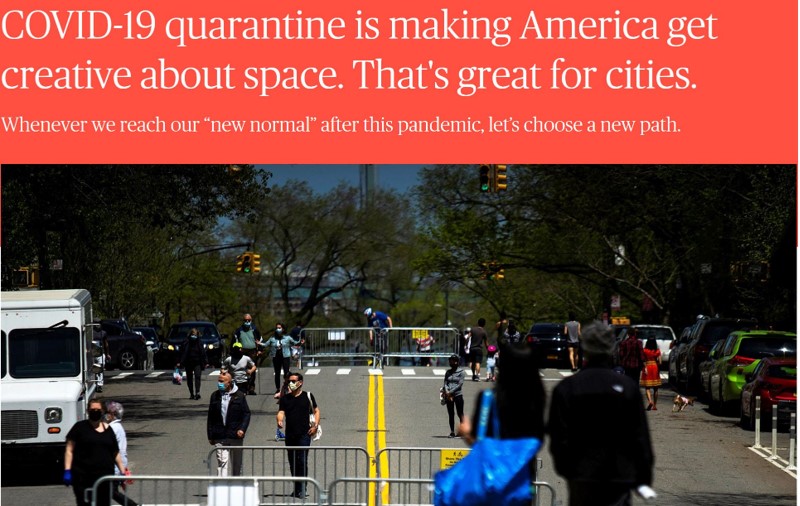
Regional and local impacts such as the shift from in-person to remote working and shopping have abated from their peaks but are still significantly higher than pre-pandemic levels. Steep declines in transit ridership caused by changing commuter patterns and fear of COVID-19 persist even as travel by private automobile (and ride hailing companies such as Uber and Lyft) has recovered. The surge of interest in parks, trails, open-air dining, and other outdoor experiences that emerged during the lockdown continues. Combined with global forces and trends such as shifting demographics and climate change (summer 2021 was the warmest on record for global land areas), such impacts raise a host of questions for local communities, for example:
- How can bricks-and mortar retail, office, restaurant, and other supporting uses impacted by remote working and shopping be repositioned or repurposed for new uses?
- How can communities capitalize on heightened interest in parks and walkable environments to provide amenities and improve health?
- What needs to be done to ensure the sustainability of public transit as a vital component of the mobility network?
- How can disparities in access to resources, economic opportunity, and health outcomes experienced by poor and minority communities – the result of deep-seated structural discrimination and magnified by the pandemic – be addressed?
Drivers of Change
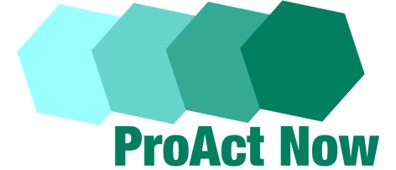
My colleague Ben Hitchings, FAICP, Principal of Green Heron Planning, LLC, and I have developed an assessment tool and strategic planning process, called ProAct NowTM, to help communities prepare for emerging issues and the uncertainty of change that is the hallmark of the new normal. ProAct NowTM begins with the Drivers of Change Framework, which is a way of making sense of the complexity of global forces that are impacting or will impact local communities. We group drivers of change into four broad categories: social, technological, economic, and environmental. Figure 1 identifies representative drivers for each category.
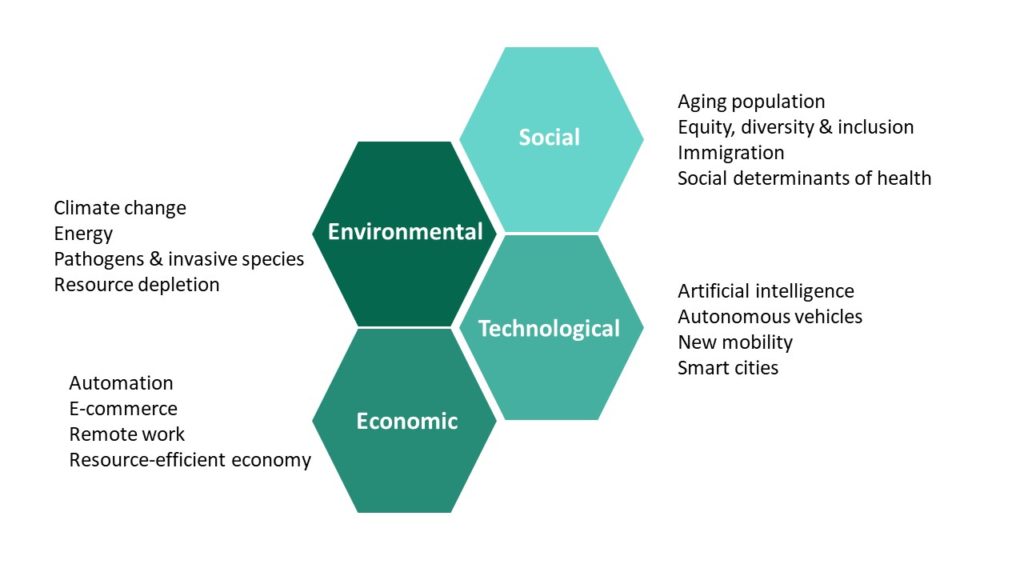
Without getting into detail about individual drivers of change, several key points about the framework are worth noting. First, there are many overlaps and interconnections between different drivers (for example, artificial intelligence and automation; equity and climate change vulnerability; aging population and susceptibility to pathogens like COVID-19). Second, the drivers manifest themselves in the form of acute shocks (for example, natural disasters and economic recessions) and chronic stresses over time (for example, warming temperatures caused by climate change). The COVID-19 pandemic (both a shock and a manifestation of a driver of change) magnified the disruptive impacts of multiple drivers (remote work, e-commerce, equity, social determinants of health, etc.), illustrating how they are interconnected. Third, the impacts of drivers of change will play out over different timeframes. For example, demographic shifts such as an aging population and increasing diversity are being felt now, while widespread deployment of autonomous vehicles is likely several decades off in the future. We believe that the challenge for communities is to address change in a proactive, integrated way rather than the piecemeal, reactive one that is the norm.
Preparing for the Future
So, how can communities succeed in the new normal? To begin, all organizational activities, including day-to-day operations. preparation of annual budgets and work programs, and long-range planning, should be informed by a future focus (or strategic foresight, the ability to anticipate what will happen or be needed in the future). Changing the organizational mindset from one of reacting to events as they occur to anticipating and managing the impacts of change will not be easy but is necessary in a time of predictable unpredictability. A place to start might be to establish a work group to scan emerging issues and trends, identify those most relevant to the community, and consider their implications. A next step would be to develop a comprehensive strategy to build community resilience to the disruptive effects of change. Towards this end, I like the definition of resilience from the Rockefeller Foundation’s 100 Resilient Cities initiative:
The capacity of individuals, communities, institutions, businesses, and systems to survive, adapt, and grow no matter what kind of chronic stresses and acute shocks they experience.
A resilient community takes steps to reduce vulnerabilities to natural and human-made disasters and is prepared to recover quickly after a disaster strikes. Equity is foundational to resilience; a resilient community reduces socioeconomic inequality, health disparities, and inequitable access to resources. A resilient economy has a diverse employment base, well-prepared workforce, relies on local assets, and can adapt to technological and other types of change. As demonstrated by the impacts of the pandemic on people with underlying health conditions, a resilient community is a healthy one whose members benefit from physical activity, access to nutritious foods, decent and affordable housing, economic stability, and more.
ProAct NowTM includes a three-step strategic planning process to help communities build resilience to shocks and stresses caused by change. These steps are to (1) conduct a scan of emerging issues and trends, using the drivers of change as a framework; (2) assess community resilience relative to priority issues and trends identified by the scan; and (3) prepare a community readiness plan to increase agility and capacity to overcome challenges, address threats, and take advantage of opportunities the future will bring.
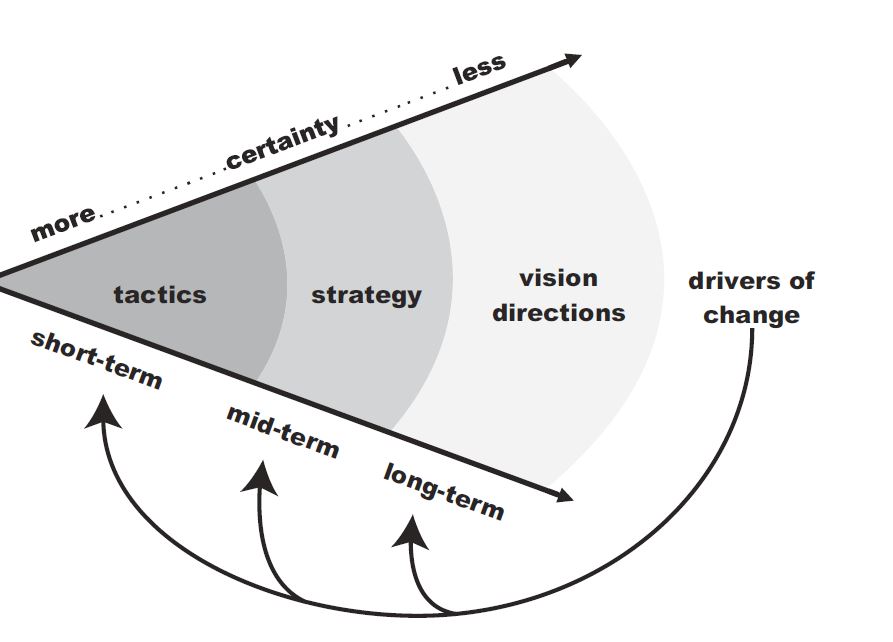
I plan to write a series of notebook blogs in the coming year that will further explore how communities can position themselves to succeed in a rapidly changing world. Potential topics include, among others, integrating the Drivers of Change Framework into the comprehensive plan; using the Cone of Uncertainty as a strategic lens to inform plan implementation over time; and the role of tools such as scenario planning and pilot projects. Stay tuned!
Related Notebook Blog: How Can Communities Plan for Technological Change?
Reference
The Economist, Volume 441 Number 9276, December 18-31, 2021. “The new normal: The era of predictable unpredictability is not going away,” p. 13; and “Internal migration: Movers and shakers – The covid reshuffle of the past two years will change American for longer,” p. 21
